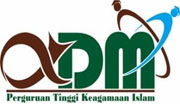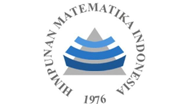Analysis of Ruin Probability in Insurance Companies Using the Cramer-Lundberg Model with Variations in Claim Distributions
Abstract
Keywords
Full Text:
PDFReferences
H. Albrecher, M. Bladt, and E. Vatamidou, “Efficient Simulation of Ruin Probabilities when claims are mixtures of heavy and light tails”, Methodology and Computing in Applied Probability, vol.23, pp. 1237-1255, 2021. https://doi.org/10.1007/s11009-020-09799-6
J. Dhaene, R. J. A. Laeven, and Y. Zhang, “Systemic risk: Conditinal distortion risk measures”, Insurance: Mathematics and Economics, vol.103, pp 126-145, 2022.
https://doi.org/10.1016/j.insmatheco.2021.12.002
A. Kuznetsov and Z. Palmowski, “Ruin probability in the classical Cramer-Lundberg model with investments,” Insurance: Mathematics and Economics, vol. 108, pp 189-205, 2023. https://doi.org/10.1016/j.insmatheco.2022.12.004
Z. Cheng, and Y. Seol, “Diffusion Approximation of a Risk Model with Non-Stationary Hawkes Arrivals of Claims”, Methodology Computing Appllied Probability, vol. 22, pp 555-571, 2020. https://doi.org/10.1007/s11009-019-09722-8
A. Bazyari, “Analysis of a Dependent Perturbed Renewal Risk Model with Heavy-tailed Distributions”, Lobachevskii Journal of Mathematics, vol. 44, pp 4610-4629, 2023. https://doi.org/10.1134/S1995080223110057
A. Bazyari, “On the ruin probabilities for a general perturbed renewal risk process,” Journal of Statistical Planning and Inference, vol. 227, pp 1-17, 2023. https://doi.org/10.1016/j.jspi.2023.02.005
O. Melnikov, and J. Milz, “Randomized Quasi-Monte Carlo Methods for Risk-Averse Stochastic Optimization”, Journal of Optimization Theory and Applications, vol. 206, pp 14, 2025. https://doi.org/10.1007/s10957-025-02693-6
M. Tomita, K. Takaoka, and M, Ishizaka, “Some mathematical properties of the premium function and ruin probability of a generalized Cramer-Lundberg model driven by mixed poisson processes”, Japan Journal of Industrial and Applied Mathematics, vol. 41, pp 1389-1412, 2024. https://doi.org/10.1007/s13160-024-00656-4
Swiss Re Institute, “Advanced Risk Modelling for Reinsurance Strategies”, Swiss Re, 2022. [Online]. Available: https://www.swissre.com/institute
A. Alfonsi, A. Cherchali, J. A. I. Acevedom, “ Multilevel Monte Carlo for computing the SCR with the standard formula and other stress tests,” Insurance: Mathematics and Economics, vol.100, pp 235-260, 2021. https://doi.org/10.1016/j.insmatheco.2021.05.005
F. Perla, S. Scognamiglio, A. Spadaro, and P. Zanetti, “Explainable Least Square Monte Carlo for Solvency Capital Requirement Evaluation,” North Americal Actuarial Journal, 2025. https://doi.org/10.1080/10920277.2025.2519542
S. Graf, and R. Korn, “A guide to Monte Carlo simulation concepts for assessment of risk-return profiles for regulatory purposes,” European Actuarial Journal, vol.10, pp 273-293, 2020. https://doi.org/10.1007/s13385-020-00232-3
S. A. Klugman, H. H. Panjer, and G. E. Willmot, Loss Models: From Data to Decisions, 4th ed. Hoboken, NJ: Wiley, 2012. http://dx.doi.org/10.1002/9780470391341.index
G. Willmot and J. K. Woo, Surplus Analysis of Sparre Andersen Insurance Risk Processes. Springer, New York, 2017. https://doi.org/10.1007/978-3-319-71362-5
T. Dimitrakopoulou, A. Karagrigoriou, A. Makrides, I. Vonta, “Competing Risks Modelling via Multistate Sysem Methodology under a Generalized Family of Distributions,” Methodology and Computing in Applied Probability, vol. 27:41, 2025. https://doi.org/10.1007/s11009-025-10169-3
D. Gaigall, “Test for Changes in The Modeled Solvency Capital Requirement of An Internal Risk Model”, Journal of the IAA, vol. 51, pp 813-837, 2021. https://doi.org/10.1017/asb.2021.20
Y. K. Tse, “Basic Monte Carlo Methods,” Nonlife Actuarial Models, Singapore Management University, pp 370-401, 2023. https://doi.org/10.1017/9781009315067.014
J. Tom, The Cramer-Lundberg Model and Copulas, Eindhoven University of Technology, Thesis, 2021.
M. C. Fu, Simulation and the Monte Carlo Method, 3rd ed., Hoboken, NJ: Wiley, 2023. https://doi.org/10.1002/9781118631980
M. Mandjes and O. Boxma, The Cramer-Lundberg model and its variants, Spinger Nature, 2023. https://doi.org/10.1007/978-3-031-39105-7
T. M. Tovstik, and D. S. Bulgakova, “An Insurance Company Model with Random Premium and Claims”, Vestnik St.Petersb Univ.Math, vol. 58, pp 79-91, 2025. https://doi.org/10.1134/S1063454125700098
EIOPA, “Solvency II: 2023 Insurance Stress Test Report,” European Insurance and Occupational Pensions Authority, 2023. [Online]. Available: https://www.eiopa.europa.eu
Society of Actuaries, “Monte Carlo Simulation Application in Insurance Risk Management”, SOA Research Report, 2024. [Online]. Available: https://www.soa.org/resources/research-reports/2024/monte-carlo-simulation-insurance-risk
D. C. M. Dickson, M. R. Hardy, dan H. R. Waters, Actuarial Mathematics for Life Contingent Risks, 2nd ed., Cambridge: Cambrige University Press, 2013. https://doi.org/10.1017/9781108784184
J. Grandell, Aspects of Risk Theory, Springer Science & Business Media, 2012. https://doi.org/10.1007/978-1-4613-9058-9
DOI: http://dx.doi.org/10.30829/zero.v9i2.25581
Refbacks
- There are currently no refbacks.

This work is licensed under a Creative Commons Attribution-ShareAlike 4.0 International License.
Publisher : Department of Mathematics Faculty of Science and Technology Universitas Islam Negeri Sumatera Utara Medan | |
✉️ Email: zero_journal@uinsu.ac.id 📱 WhatsApp:085270009767 (Admin Official) | |
 |  |  |  |  |



